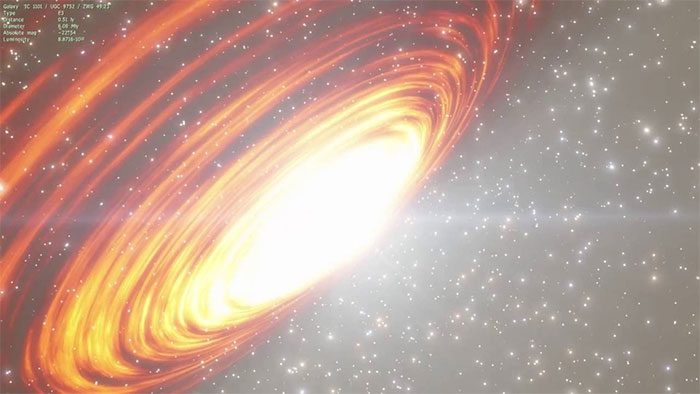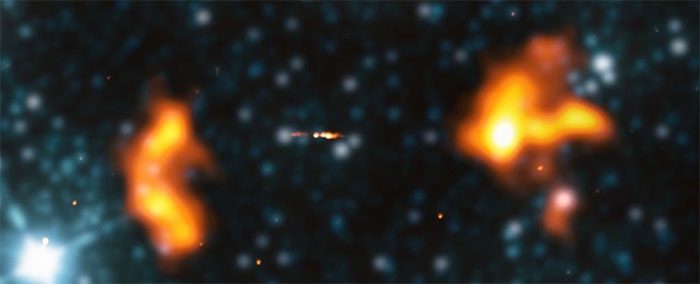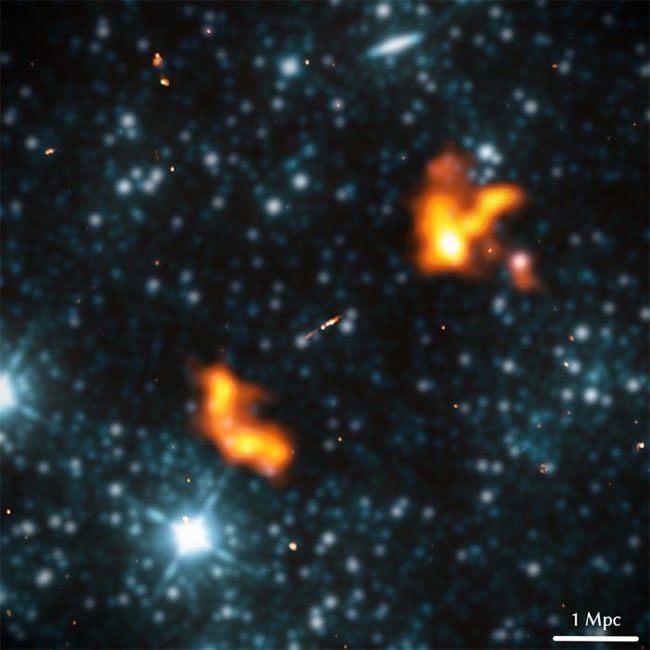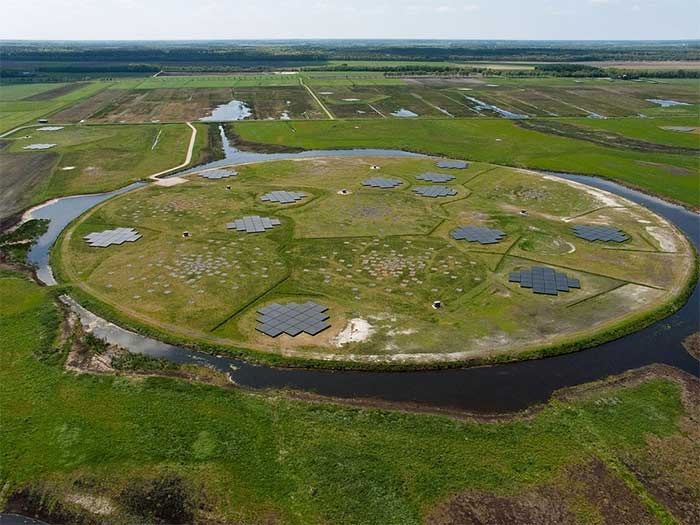Astronomers have discovered a colossal galaxy spanning 16.3 million light-years, which is 100 times larger than our Milky Way.
Located approximately 3 billion light-years away from Earth, the radio galaxy Alcyoneus stretches up to 16.3 million light-years. This is the largest galaxy ever discovered to date.
Named after the son of the Greek god Ouranos – the primordial deity of the sky, Alcyoneus may provide new insights into the structure of the universe, also known as the cosmic web, believed to connect all galaxies.

Image of a colossal galaxy simulated in the Space Engine tool. (Photo: YouTube/Space Engine).
The Origin of Alcyoneus
According to Science Alert, the radio galaxy hosts a central galaxy with supermassive black holes. As matter falls into the black hole, it releases energy from the galaxy’s center, generating immense energy jets.
These energy jets then interact with the environment between other galaxies in the cluster, accelerating electrons and producing radio emissions. These jets can travel vast distances before spreading out into gigantic radio waves.
Astronomers at the Leiden Observatory in the Netherlands state that this is a common process, even with our own Milky Way. However, what puzzles them is why in certain specific galaxies, these radio waves can grow to such enormous sizes.

Actual image of Alcyoneus, the largest galaxy ever discovered. (Photo: Martijn Oei).
“If the unique characteristics of the host galaxy determine the gigantic size of a radio galaxy, then the host galaxy of the largest radio galaxy will hold the answer,” explained Martijn Oei, the lead researcher at Leiden Observatory.
Apart from the internal characteristics, specifically the host galaxy, Oei suggests that external factors also directly influence the size of the radio galaxy.
“Similarly, if there are specific environmental features conducive to the development of a giant radio galaxy, then the largest radio galaxy is likely to exist in such an environment,” the astronomer continued.
To further investigate Alcyoneus, astronomers utilized the Sloan Digital Sky Survey facility located at Apache Point Observatory in New Mexico to observe the host galaxy.
They discovered that it is a fairly ordinary elliptical galaxy, with a mass approximately 240 billion times that of the Sun, featuring a supermassive black hole at its center with a mass about 400 million times that of the Sun.

Radio waves from Alcyoneus. (Photo: Martijn Oei).
The research team confirmed that both of these figures are indeed low for giant radio galaxies, which may provide some clues about the development of radio waves.
“Alcyoneus and its host galaxy are suspiciously normal. Indicators such as the total low-frequency brightness density, stellar mass, and supermassive black hole mass are all lower than or equal to those of typical radio galaxies,” the researchers stated.
“Thus, the host galaxies or central black holes are not the main factors causing such a large radio galaxy,” the team continued.
Currently, the most convincing reason proposed by the team is that Alcyoneus exists in a region of space with a lower-than-average matter density, allowing the galaxy to expand rapidly. They also believe that Alcyoneus is still growing larger.
How Alcyoneus Was Discovered
To detect Alcyoneus, the research team used data collected by the Low-Frequency Array (LOFAR). This is a network consisting of approximately 20,000 radio antennas, located at 52 sites across Europe.
Researchers detected two enormous plasma jets emanating from a supermassive black hole at the center of the galaxy. The material expelled by these jets includes elements that form new stars.

The LOFAR network located in the Netherlands. (Photo: Creative Commons).
Traveling at nearly the speed of light, this material heats up and transforms into plasma, glowing in the form of radio light that LOFAR can detect.
“We have discovered the largest structure ever known in the universe, a colossal radio galaxy measuring 16.3 million light-years in length,” the research team stated.




















































